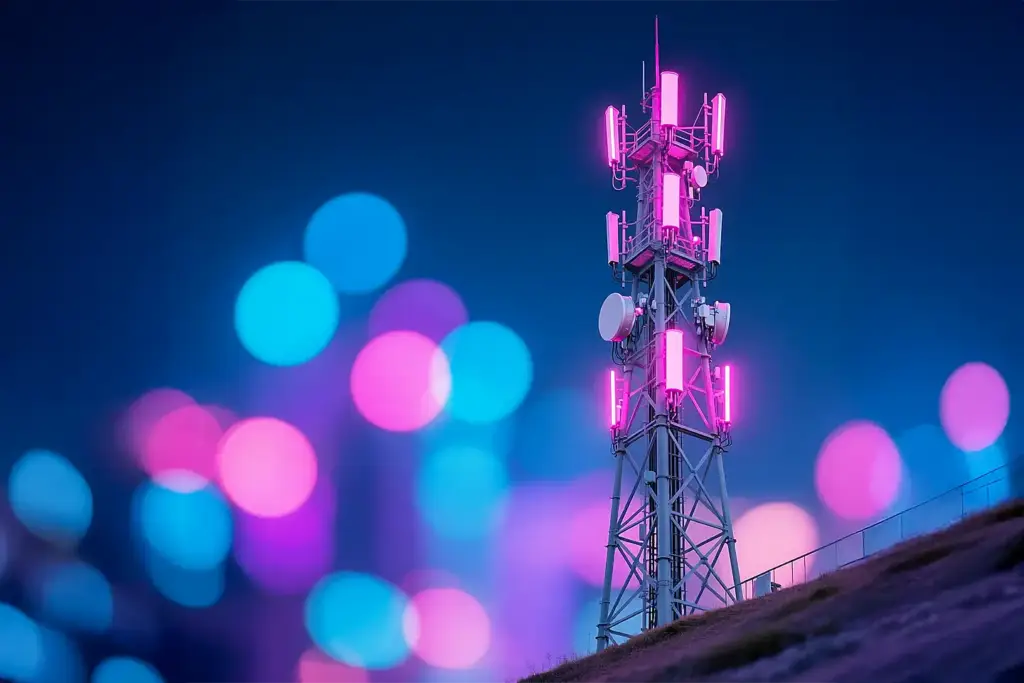The Internet of Things (IoT) is transforming industries by connecting devices, systems, and data like never before. As IoT continues to expand its reach, one technology stands out as a game-changer: 5G. The fifth generation of mobile networks promises unprecedented speed, ultra-low latency, and massive device connectivity, all of which are crucial for the next phase of IoT development. In this post, we explore how 5G is accelerating the evolution of IoT technologies and unlocking new opportunities for businesses and consumers alike.
Faster Speeds and Real-Time Communication
One of the standout features of 5G is its lightning-fast data transfer rates, which are up to 100 times faster than 4G. This increase enables IoT devices to send and receive data almost instantaneously, opening the door to real-time monitoring and control across various applications. From smart cities managing traffic flow to healthcare devices performing remote surgeries, 5G’s speed enhances IoT’s ability to deliver timely, accurate, and actionable insights.
Massive Device Connectivity
5G technology is designed to support a massive number of connected devices per square kilometre — up to one million, compared to 100,000 under 4G. This capability is vital as IoT ecosystems grow increasingly complex, with sensors, wearables, vehicles, and industrial machines all communicating simultaneously. The vast connectivity potential of 5G allows businesses to scale their IoT deployments without worrying about network congestion or dropped connections.
Ultra-Low Latency for Critical Applications
Latency — the delay between sending and receiving data — is dramatically reduced with 5G, reaching as low as 1 millisecond. This ultra-low latency is essential for critical IoT applications where split-second decisions matter, such as autonomous vehicles, industrial automation, and emergency response systems. By minimising lag, 5G ensures that connected devices can react quickly and reliably in mission-critical environments.
Enhanced Energy Efficiency
IoT devices are often battery-powered and need to operate for long periods without frequent charging. 5G networks incorporate energy-saving technologies that extend battery life by optimising how devices connect and communicate. This improvement means IoT sensors and wearables can function more sustainably, reducing maintenance costs and environmental impact.

New Opportunities Across Industries
5G-enabled IoT is driving innovation across multiple sectors:
- Manufacturing: Smart factories leverage 5G to connect robots, sensors, and control systems, improving precision and reducing downtime.
- Healthcare: Remote patient monitoring and telemedicine become more effective with reliable, high-speed connectivity.
- Agriculture: Precision farming uses 5G-powered IoT sensors for soil monitoring, irrigation control, and crop health analysis.
- Transportation: Connected vehicles and smart traffic management systems benefit from 5G’s low latency and broad coverage.
Preparing for the 5G-Enabled IoT Future
For businesses aiming to harness the power of 5G-driven IoT, strategic planning is essential. This includes investing in compatible devices, upgrading network infrastructure, and developing robust data analytics capabilities. Security remains a top priority, as increased connectivity also expands potential vulnerabilities, necessitating advanced cybersecurity measures.
Embracing the Future
The arrival of 5G marks a pivotal moment in IoT’s evolution. By providing faster speeds, greater device capacity, ultra-low latency, and improved energy efficiency, 5G unlocks new possibilities for connected technologies. As industries adapt to this next-generation network, businesses that embrace 5G-enabled IoT innovations stand to gain a significant competitive edge in the digital era.
Are you ready to explore how 5G can transform your IoT initiatives? At Howood International, we specialise in delivering cutting-edge IoT solutions harnessing the power of 5G connectivity to help businesses accelerate digital transformation, enhance operational efficiency, and unlock new growth opportunities. The future of connectivity is here — let’s make the most of it together.



